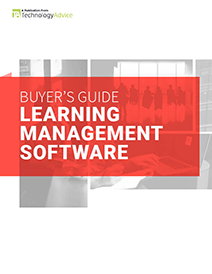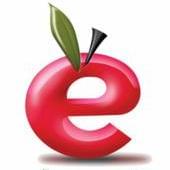Let’s face it. With over 700 learning management system (LMS) vendors to choose from, narrowing down which LMS is right for your business can be tough. Even so, there are some key features and functionality that should be part of any modern solution.
During your learning management system comparison, make sure you see these eight features and capabilities before you add a product to your shortlist:
1. Learner-Centric Experience
The purpose of buying an LMS is to ultimately train your users, right? These users could be internal employees, external users, channel partners, etc. You’ll want to tailor the learning experience to each user or user group. You can do this a number of ways using an LMS.
An LMS that lets you assign users to specific user groups will ensure each group is seeing the appropriate training and information that’s pertinent to them. For example, you don’t want your sales team seeing courses for accounting and vice versa. Assigning the sales staff to a sales-specific group ensures a better learning experience with less confusion.
ALSO READ: 5 Ways to Increase Employee Engagement with Your LMS
Branding is another way to create a learner-centric experience. A great LMS will let you brand the interface based on user groups or departments. It also helps keep consistency across your company’s online training presence.
2. Intuitive User Experience
One of the biggest complaints of LMS users is a clunky and inefficient system. When navigation is hard and users can’t easily find what they need, that can have a negative impact on training completion.
Look for an LMS that is easy to navigate and highlights the important information users want to see front and center. The interface should be clean and modern and offer basic customizations to suit the needs of your team.
3. Mobile Capabilities
The shift to mobile isn’t a new trend, but you still need to make sure your LMS is keeping up with the times. This means it should at least be mobile-responsive, resizing appropriately based on screen size.
Many of the bigger players in the market also have or are in the process of creating native mobile apps to make training on-the-go even easier. One of the biggest benefits to these mobile apps is the offline sync feature that can save information and coursework even when a user isn’t connected to a network.
4. Built-in Reporting
Purchasing an LMS is a big financial decision, so it’s important to choose a system with built-in mechanisms for tracking performance and return on investment (ROI). One of the most important features for administrators should be reporting. LMS reports will help you prove training ROI to stakeholders and executives.
Run demos, and ask each vendor questions about how reports are run, what information can be shown, how deep the reports go, etc. Comprehensive reporting will make it easier to measure specific training metrics gauge effectiveness.
It goes without saying that you should be able to run these reports yourself. Some LMS vendors require administrators to request reports from the vendor support team. Steer clear of this headache.
5. Native Integrations
A great LMS will easily integrate with most major HRIS, CRM, Payroll, Active Directory, and other business systems to make data syncing between departments and job functions easier.
Wouldn’t it make life easier if you could see training completion data in your HRIS, instead of jumping back and forth between two systems? This becomes increasingly important for companies who enforce specific training deadlines as a prerequisite for promotion or pay increases.
These integrations can come as out-of-the-box integrations or be custom built. The real difference between the two is whether they work with just a few mouse clicks or a custom connector. Hint: you’ll have to pay for the second option.
6. Surveys
Taking advantage of survey tools to administer pre-training assessments, post-training evaluations, and gain training feedback can help significantly improve training effectiveness.
In a modern LMS, this survey tool should be integrated into the system, and administrators should be able to quickly create reports based on the collected data.
7. Blended Learning Capabilities
Online training makes up the majority of what happens in an LMS, but many businesses still need a more blended learning approach that incorporates instructor-led and on-the-job training.
For those businesses, a great LMS will be able to track online registrations for in-person trainings, send email and SMS reminders, print sign-in sheets, and more.
8. Regular Updates
Of course, what good is an LMS if it’s not keeping up with industry trends and regulatory standards? LMS providers that aren’t SCORM or xAPI compliant may soon find themselves obsolete, if that hasn’t happened already.
Likewise, a great LMS provider will make incremental updates to the LMS throughout the year as opposed to one or two large updates. These smaller, more frequent enhancements cut down on the number of bugs and help clients to better acquaint themselves with each new piece of functionality.
* * *
This is by no means an exhaustive list, but it’s a great starting point for comparing solutions. As you research vendors, be sure to read reviews and demo any products that make your shortlist.
eLogic Learning is a best-of-breed learning management system that makes delivering, tracking and reporting on training activity faster, easier and more accurate. It has been rated the Best All-Purpose Extended Enterprise LMS by Talented Learning (2016) and ranked among the Top 3 LMS Overall by Elearning 24/7 (2015).
Top Human Resources Software Recommendations


